Last weekend, the annual Structures for Inclusion conference brought together activists, designers, funders, and policy makers who are at the forefront of designing in the public interest. Leading voices weighed in, including Rural Studio, Public Workshop, Trung Le, and Thomas Fisher. The theme throughout the conference was how design can enable every person to live in a socially, economically, and environmentally healthy community.
Thanks to Katherine Darnstadt, LATENT DESIGN | Architecture for Humanity Chicago, for providing this conference wrap-up.
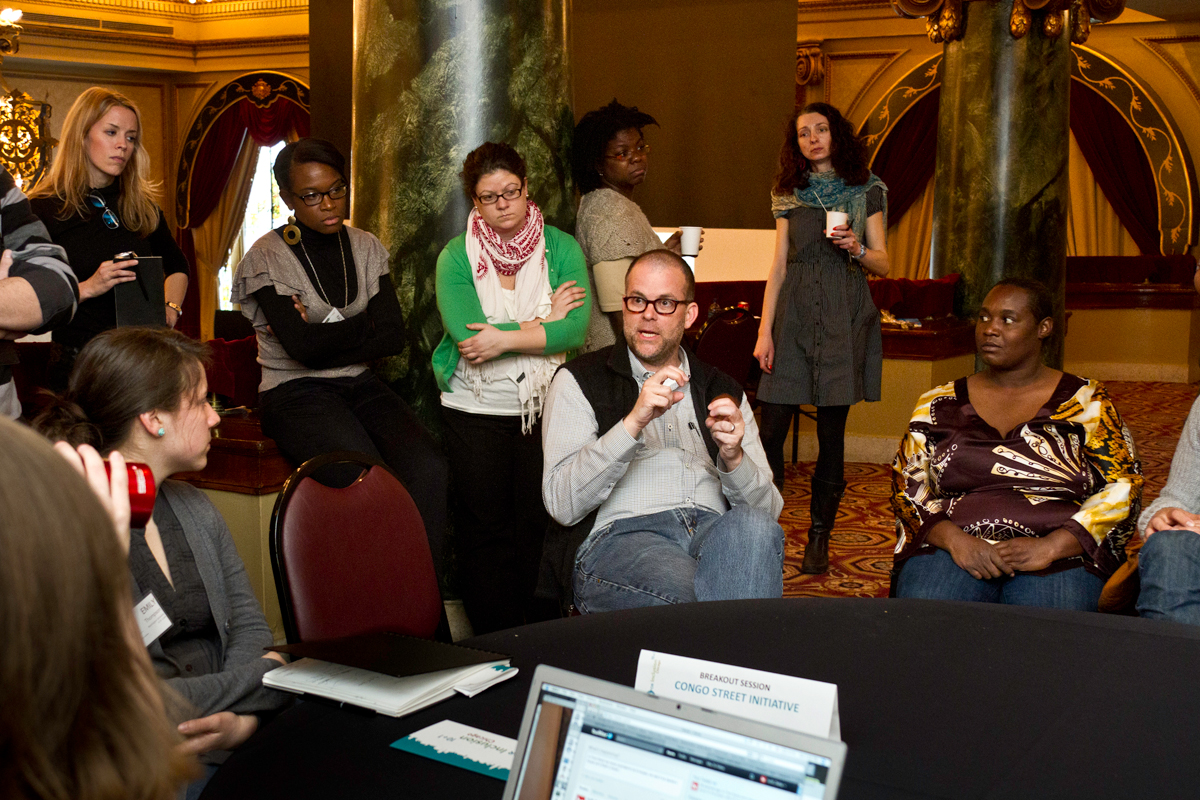
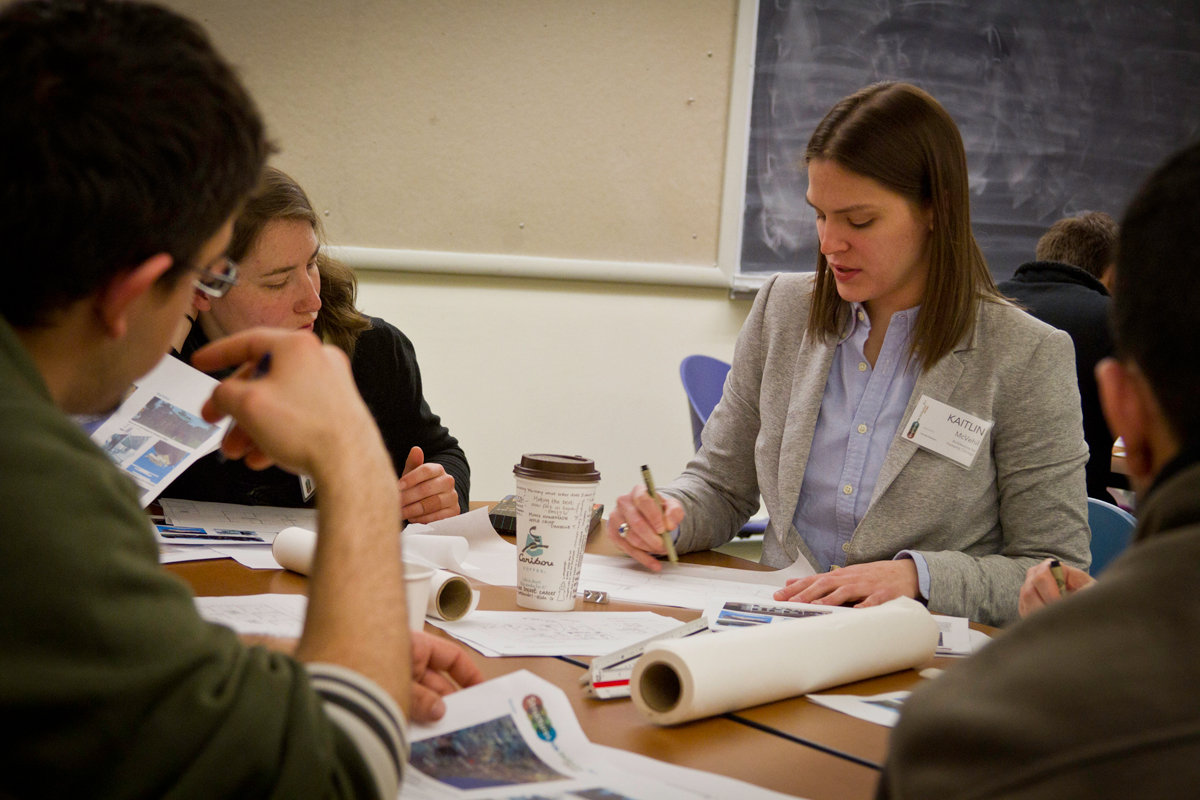 Left: Brent Brown of bcWORKSHOP conducting a breakout session with a homeowner from Congo Street Initiative.
Left: Brent Brown of bcWORKSHOP conducting a breakout session with a homeowner from Congo Street Initiative.
Right: Sunday charrette hosted by Architecture for Humanity Chicago on retrofitting shipping containers into temporary medical facilities in Kenya.
Structures for Inclusion [SFI] 10+1 brought together activists, designers, funders, and policy makers who are at the forefront of designing in the public interest. Dynamic innovators and experienced old hands from around the world provided honest, inspiring conversations. The weekend conference, already in its 11th year, featured panel discussions from architects and designers who are working in interdisciplinary environments and innovating practice and process, hands-on workshops offering deeper discussion on topics ranging from community engagement strategies to funding, and informal conversations which never have enough time to be completed.
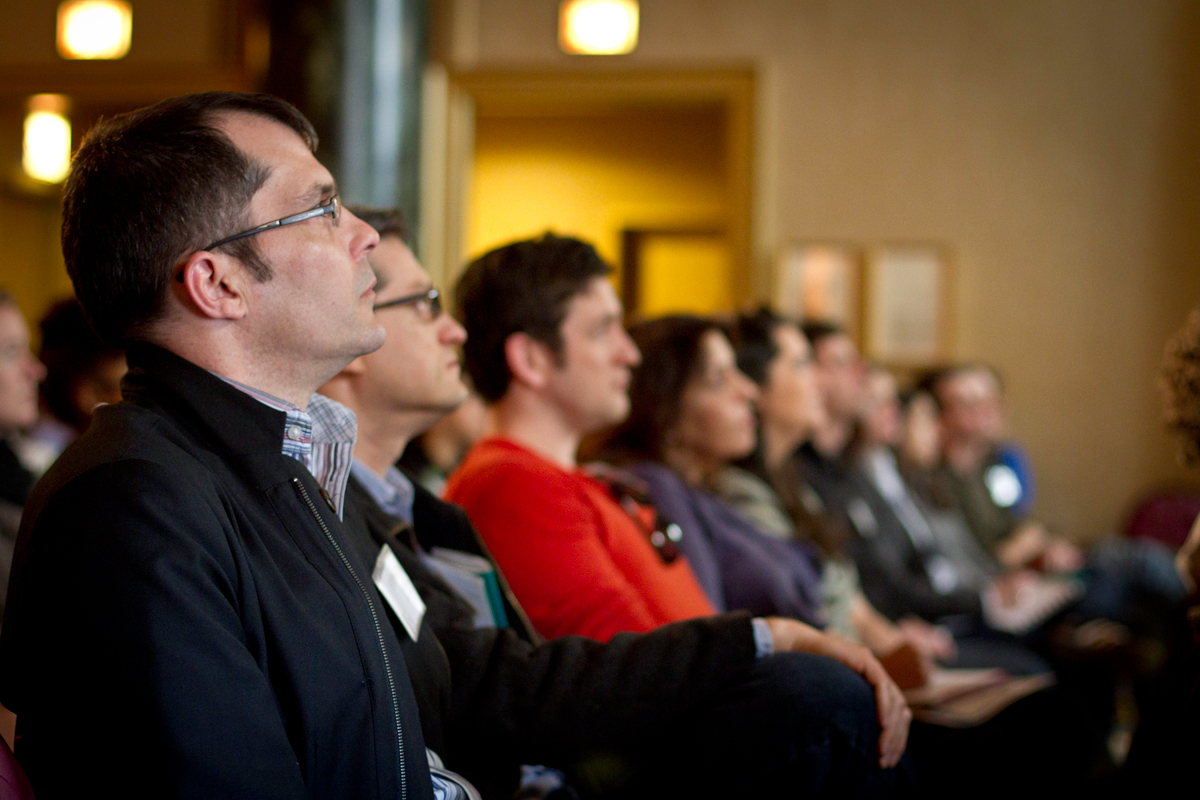 Sold out audience of 400 packed the School of the Art Institute of Chicago ballroom.
Sold out audience of 400 packed the School of the Art Institute of Chicago ballroom.
SFI officially opened with a call to designers to enable every person to be able to live in a socially, economically, and environmentally healthy community. This goal is not attainable without collaborative efforts that extend beyond the architect. The Friday keynote was a joint presentation between architect Patrick Tighe and Ric Abramson from the board of the West Hollywood Community Housing Corporation on the recently completed Sierra Bonita affordable housing project. This unique partnership allowed the mixed-use sustainable housing venture to become part of a continuum of formal, technological, and material innovation in architecture through a demand for design accountability from the developer to create an architecture that truly empowers the end user.
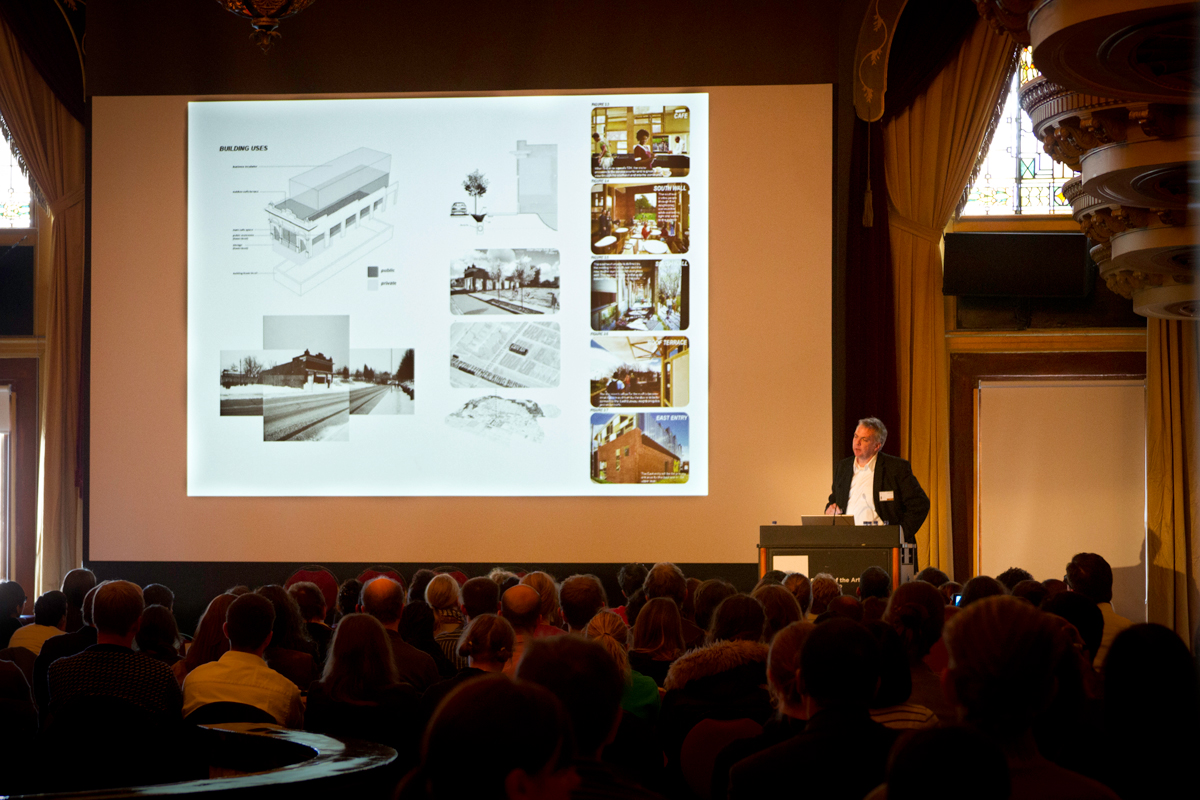 John Folan presenting SEED competition winning design for Cafe 524 by Carnegie Mellon Urban Design Build Studio.
John Folan presenting SEED competition winning design for Cafe 524 by Carnegie Mellon Urban Design Build Studio.
Saturday was a full day of panel discussions that toggled between the global and local scale with a dynamic presentation from Andrew Freear of Rural Studio sharing his thoughts on various aspects of student-led community projects. Embedding within the community is a necessary tool for the designer to engage the client, build trust, and thoughtfully use these interactions and observations to inform the design and process. The first panel of speakers, Michael Zaretsky, Brent Brown, Dan Pitera, and Sergio Palleroni, discussed how they are using new technologies dovetailed with intimate face-to-face participation. Dan Pitera challenged the audience to unlearn what they were taught about the built environment and realize participation is more than just gathering people together; it is about a meaningful exchange of ideas that take into account social, technology, environment, economic, and political issues. Even lunch was not a quiet event, with fast paced presentations from Chicago organizations working locally and leading the way like Rebuilding Exchange and the much-awaited Public Workshop presentation on their Shadelab project in collaboration with Landon Bone Baker Architects. The afternoon session kicked off with a local panel, comprised of Larry Kearns, John Folan, and Rashmi Ramaswamy, making change happen in the community through integration of workforce development, job training, and creation of spaces for social interaction in their projects. The panel was moderated by Liz Ogbu of Public Architecture, whose deft line of questioning on what makes an activist and what that means, was apropos. The short breakout session that followed brought several panelists and project stakeholders together for personal discussions on the intricate process required to implement a project. Building on what it means to be an activist, the final panel was as inspiring as it was innovative with change agents Quillian Riano, Emily Pilloton, and Trung Le placing their work simultaneously in the virtual and physical. Questioning and critiquing current systems of design education and exchange, these panelists are changing the way we talk about and create the cities and communities in which we live. Thomas Fisher closed the day with three challenges to the audience; commit to discussing more radical practice shifts outside our comfort zone; to consider the scale of the project and the need; and translate the message back to our practices that human capital is the key to engaging a broader set of colleagues.
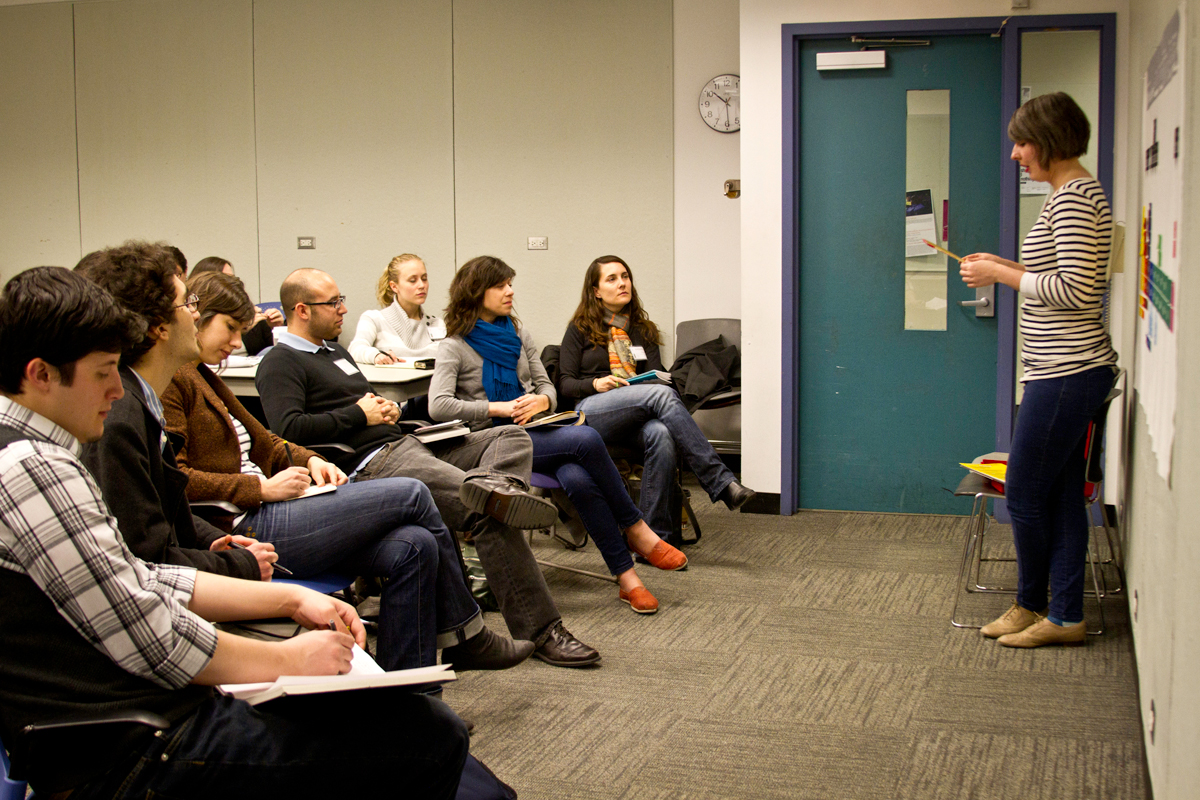
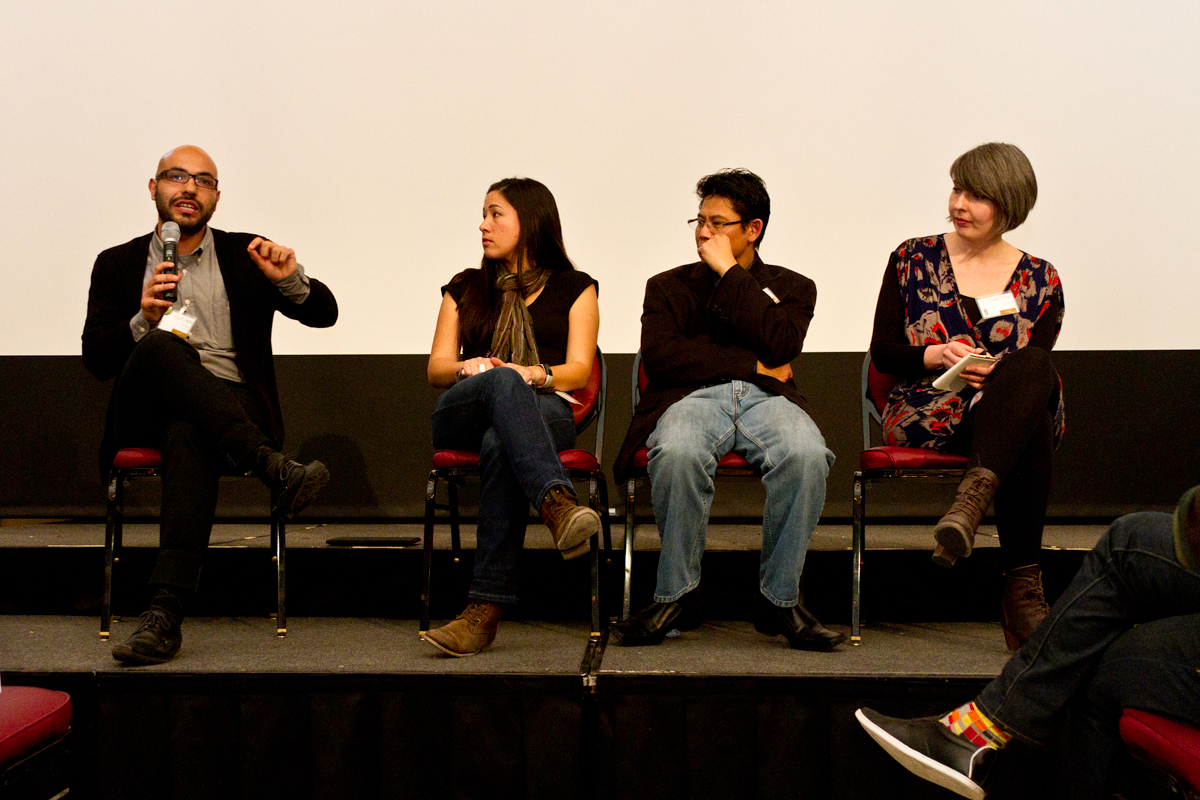 Left: Sunday workshop on affordable housing lead by Christine Gaspar from the Center for Urban Pedagogy.
Left: Sunday workshop on affordable housing lead by Christine Gaspar from the Center for Urban Pedagogy.
Right: Change Agents and Innovators panelists Quilian Riano, Emily Pilloton, Trung Le, and Christine Gaspar.
The success of Sunday was due to the diversity of workshop offerings and variety of perspectives addressing social design activism. Unique and specific answers were sought from the audience and themes from the first days of the conference were refined through intimate presentations. An overview of the SEED Evaluator, an online communication tool that facilitates community center design, was offered, as well as a design charrette by Architecture for Humanity Chicago on the use of shipping containers as temporary medical facilities in Kenya. The conference closed with attendees challenged to move forward collectively to make community-based design an integrated and necessary part of the design process through tactical uses of media, workshopping, and critique. Follow us on Twitter @SFIChicago to add to the dialogue and receive updates on how we are continuing to achieve the goal of collaborative design for the social good in Chicago and beyond.
For more details about Design Corps and Structures for Inclusion 10+2 visit http://www.designcorps.org/
To join the SEED Network, please go to http://www.seed-network.org/join/pledge.php
